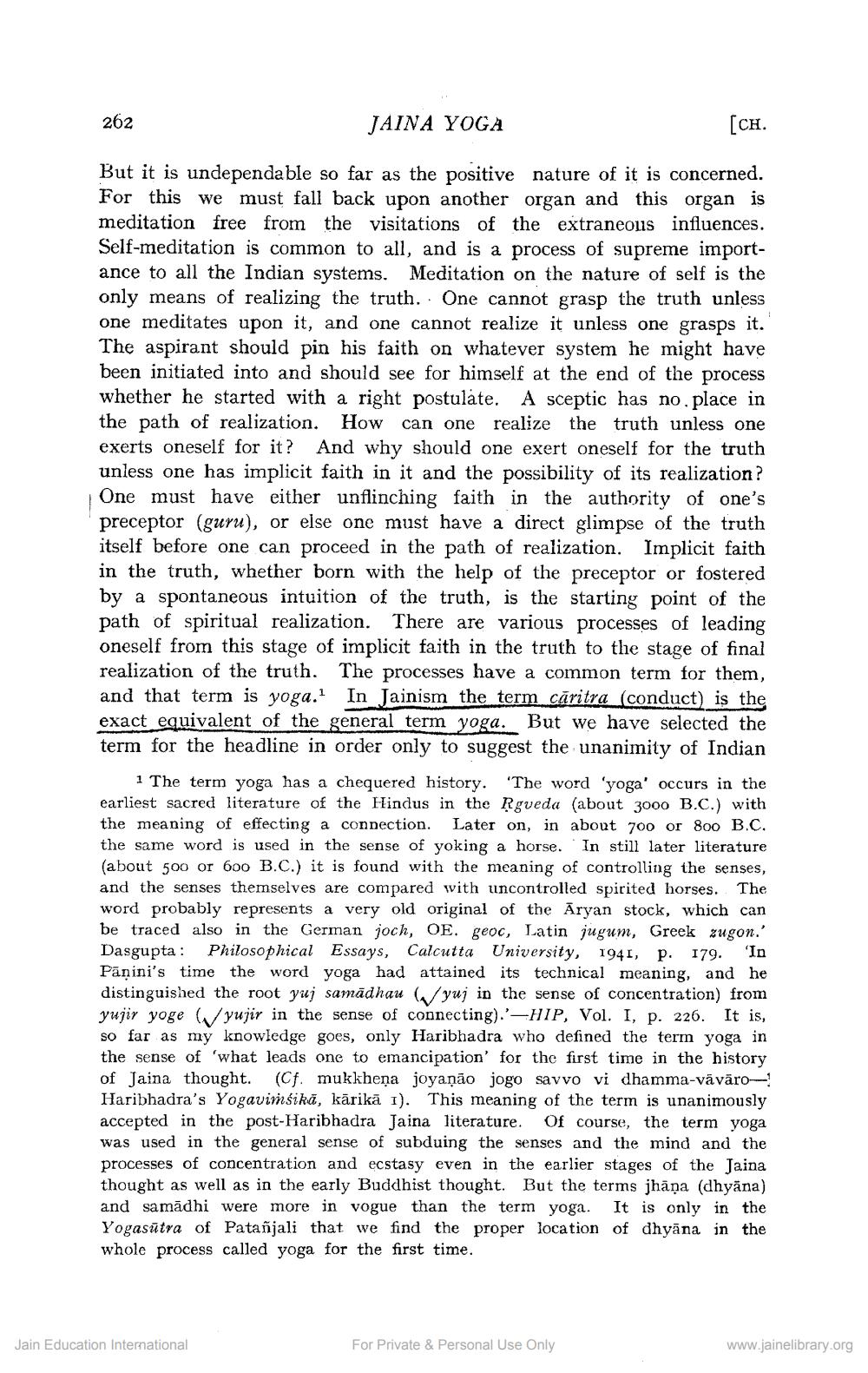________________
262
JAINA YOGA
[CH.
But it is undependable so far as the positive nature of it is concerned. For this we must fall back upon another organ and this organ is meditation free from the visitations of the extraneous influences. Self-meditation is common to all, and is a process of supreme importance to all the Indian systems. Meditation on the nature of self is the only means of realizing the truth. · One cannot grasp the truth unless one meditates upon it, and one cannot realize it unless one grasps it. The aspirant should pin his faith on whatever system he might have been initiated into and should see for himself at the end of the process whether he started with a right postulate. A sceptic has no place in the path of realization. How can one realize the truth unless one exerts oneself for it? And why should one exert oneself for the truth unless one has implicit faith in it and the possibility of its realization? One must have either unflinching faith in the authority of one's preceptor (guru), or else one must have a direct glimpse of the truth itself before one can proceed in the path of realization. Implicit faith in the truth, whether born with the help of the preceptor or fostered by a spontaneous intuition of the truth, is the starting point of the path of spiritual realization. There are various processes of leading oneself from this stage of implicit faith in the truth to the stage of final realization of the truth. The processes have a common term for them, and that term is yoga. In Jainism the term caritra (conduct) is the exact equivalent of the general term yoga. But we have selected the term for the headline in order only to suggest the unanimity of Indian
1 The term yoga has a chequered history. 'The word 'yoga' occurs in the earliest sacred literature of the Hindus in the Rgveda (about 3000 B.C.) with the meaning of effecting a connection. Later on, in about 700 or 800 B.C. the same word is used in the sense of yoking a horse. In still later literature (about 500 or 600 B.C.) it is found with the meaning of controlling the senses, and the senses themselves are compared with uncontrolled spirited horses. The word probably represents a very old original of the Aryan stock, which can be traced also in the German joch, OE. geoc, Latin jugum, Greek zugon.' Dasgupta: Philosophical Essays, Calcutta University, 1941, p. 179. In Pāṇini's time the word yoga had attained its technical meaning, and he distinguished the root yuj samādhau (w/yuj in the sense of concentration) from yujir yoge w yujir in the sense of connecting).'-HIP, Vol. I, p. 226. It is, so far as my knowledge goes, only Haribhadra who defined the term yoga in the sense of 'what leads one to emancipation for the first time in the history of Jaina thought. (Cf. mukkhena joyaņão jogo savvo vi dhamma-vāvāro Haribhadra's Yogavimśikā, kārikā 1). This meaning of the term is unanimously accepted in the post-Haribhadra Jaina literature. Of course, the term yoga was used in the general sense of subduing the senses and the mind and the processes of concentration and ecstasy even in the earlier stages of the Jaina thought as well as in the early Buddhist thought. But the terms jhāna (dhyāna) and samādhi were more in vogue than the term yoga. It is only in the Yogasūtra of Patañjali that we find the proper location of dhyāna in the whole process called yoga for the first time.
Jain Education International
For Private & Personal Use Only
www.jainelibrary.org




